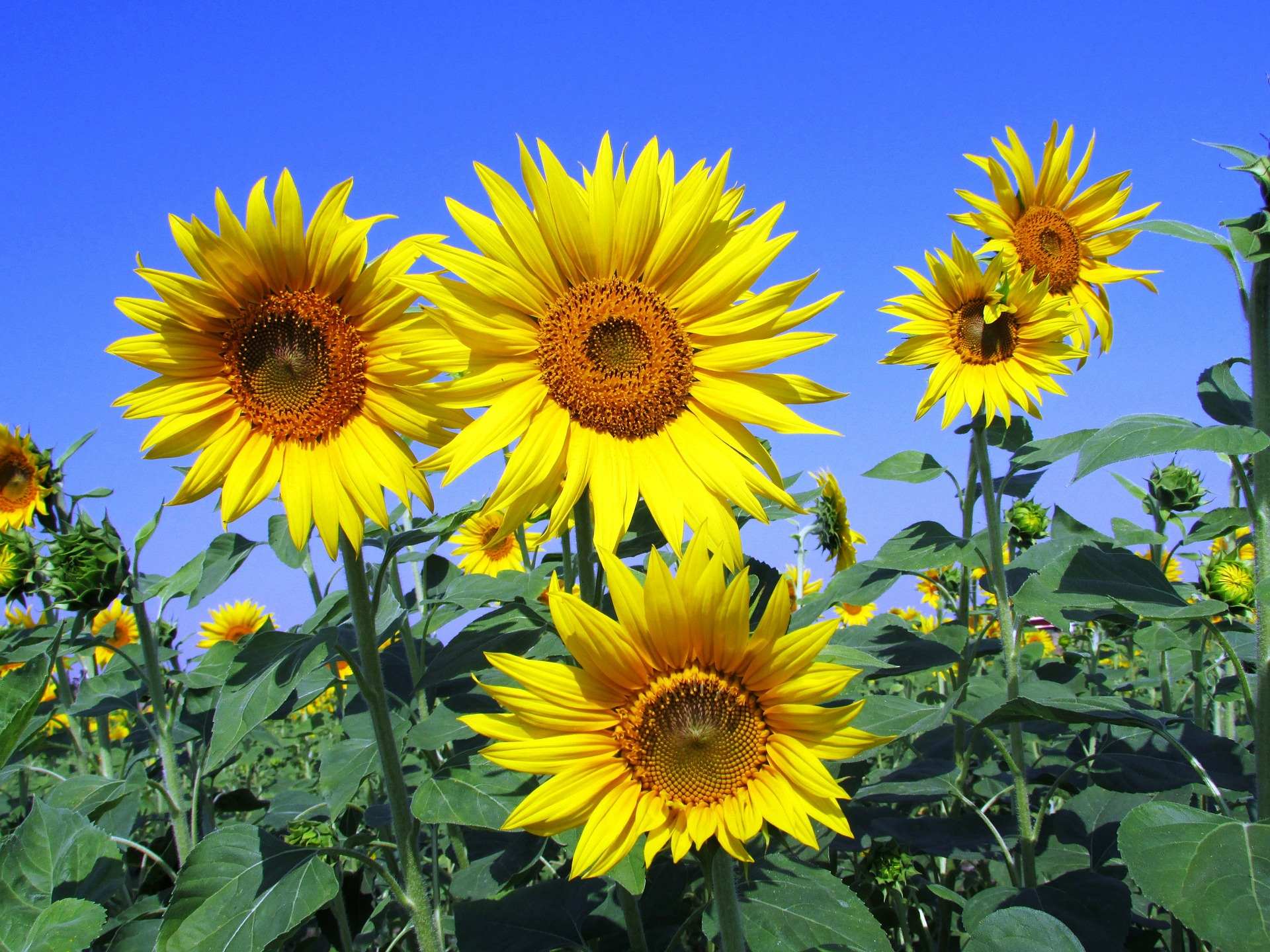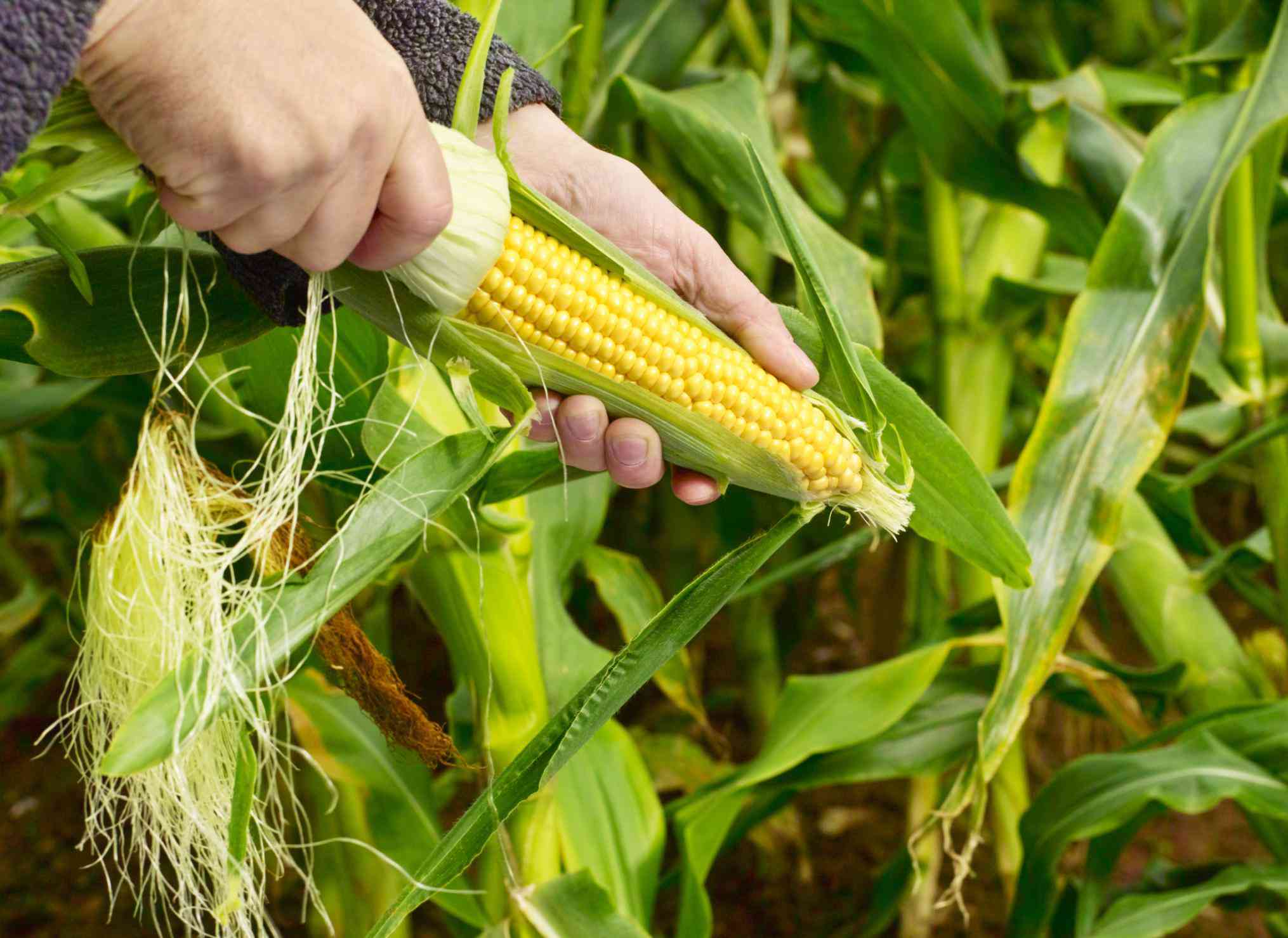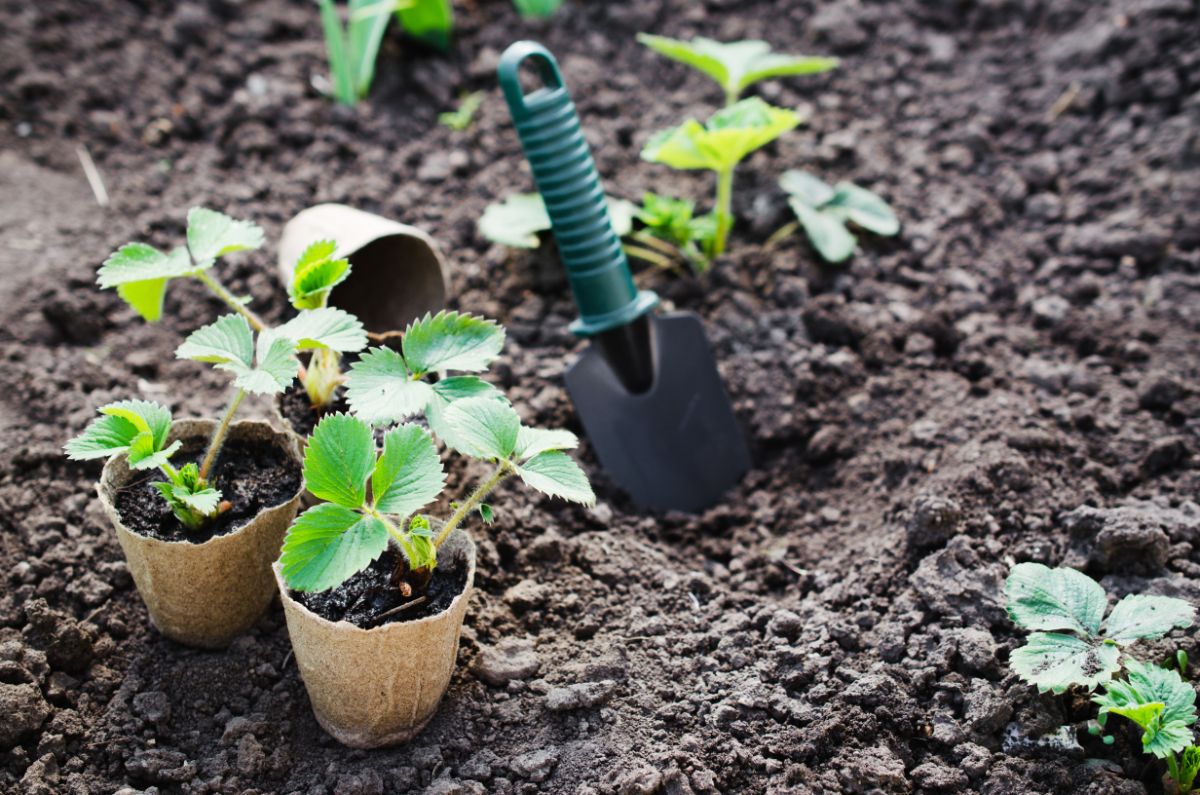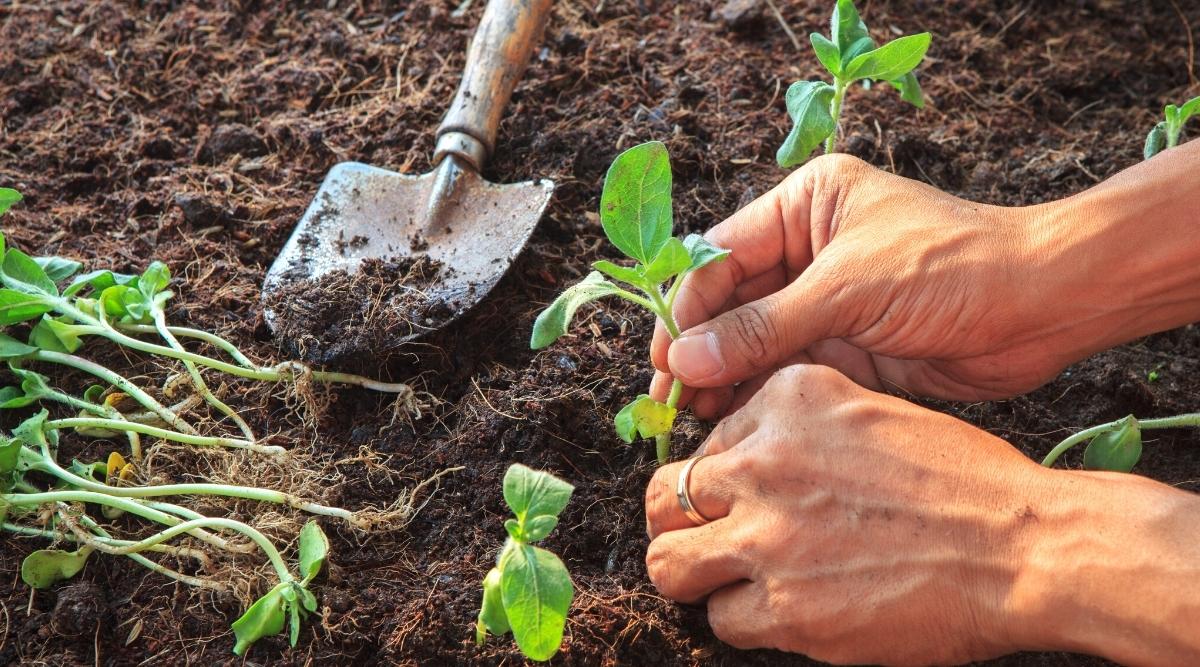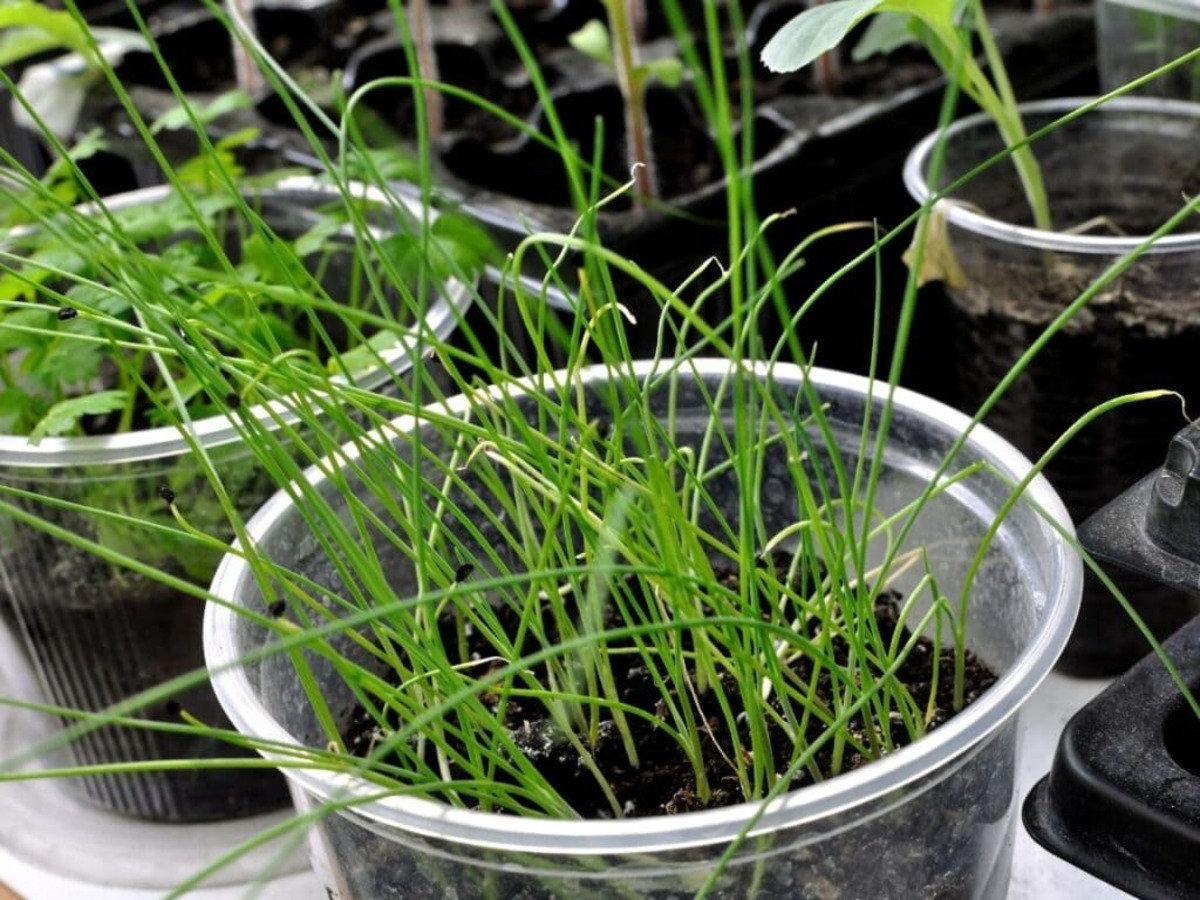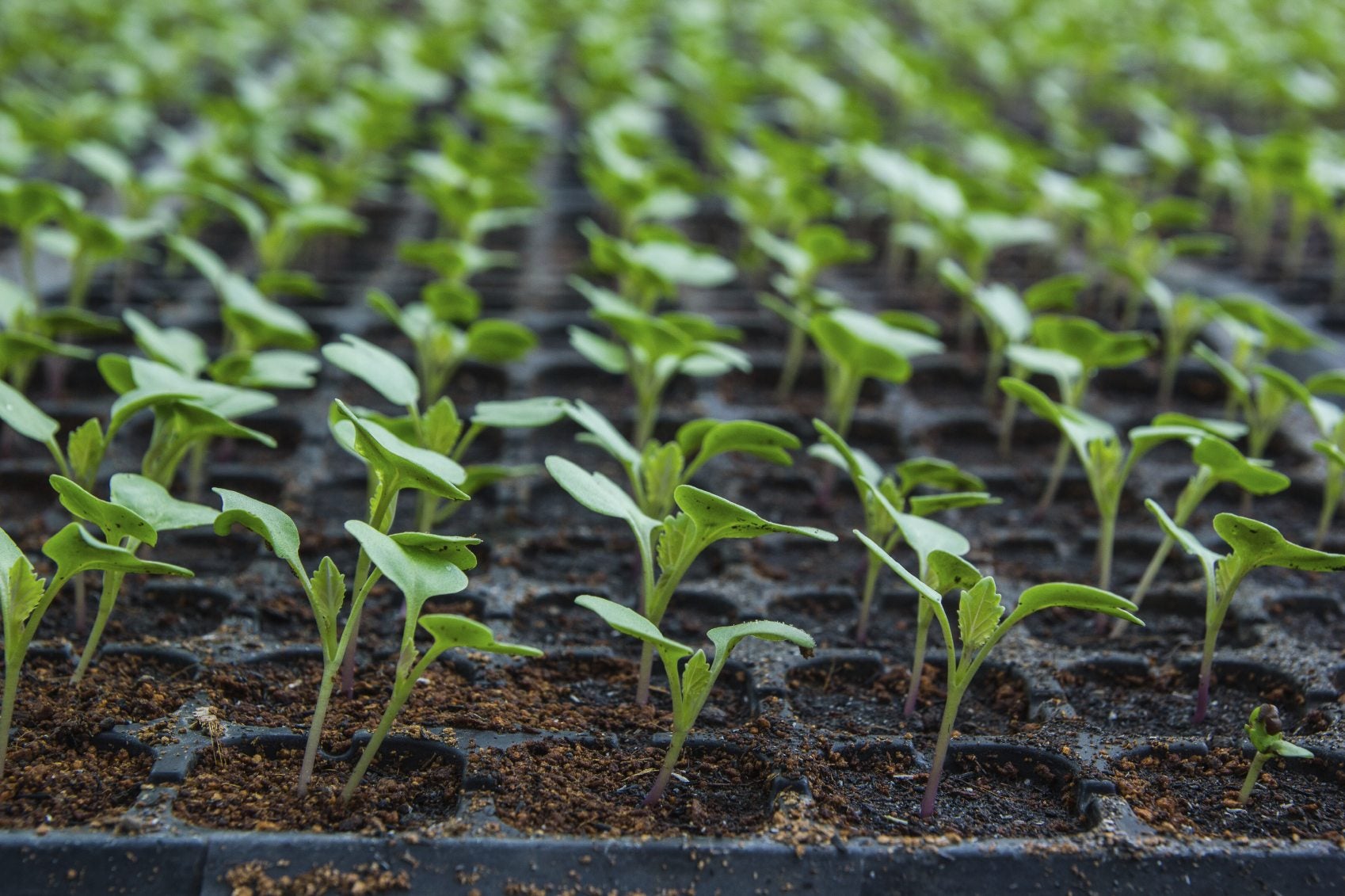Home>Types of Gardening>Ornamental Gardening>How Deep To Plant Cabbage Seedlings
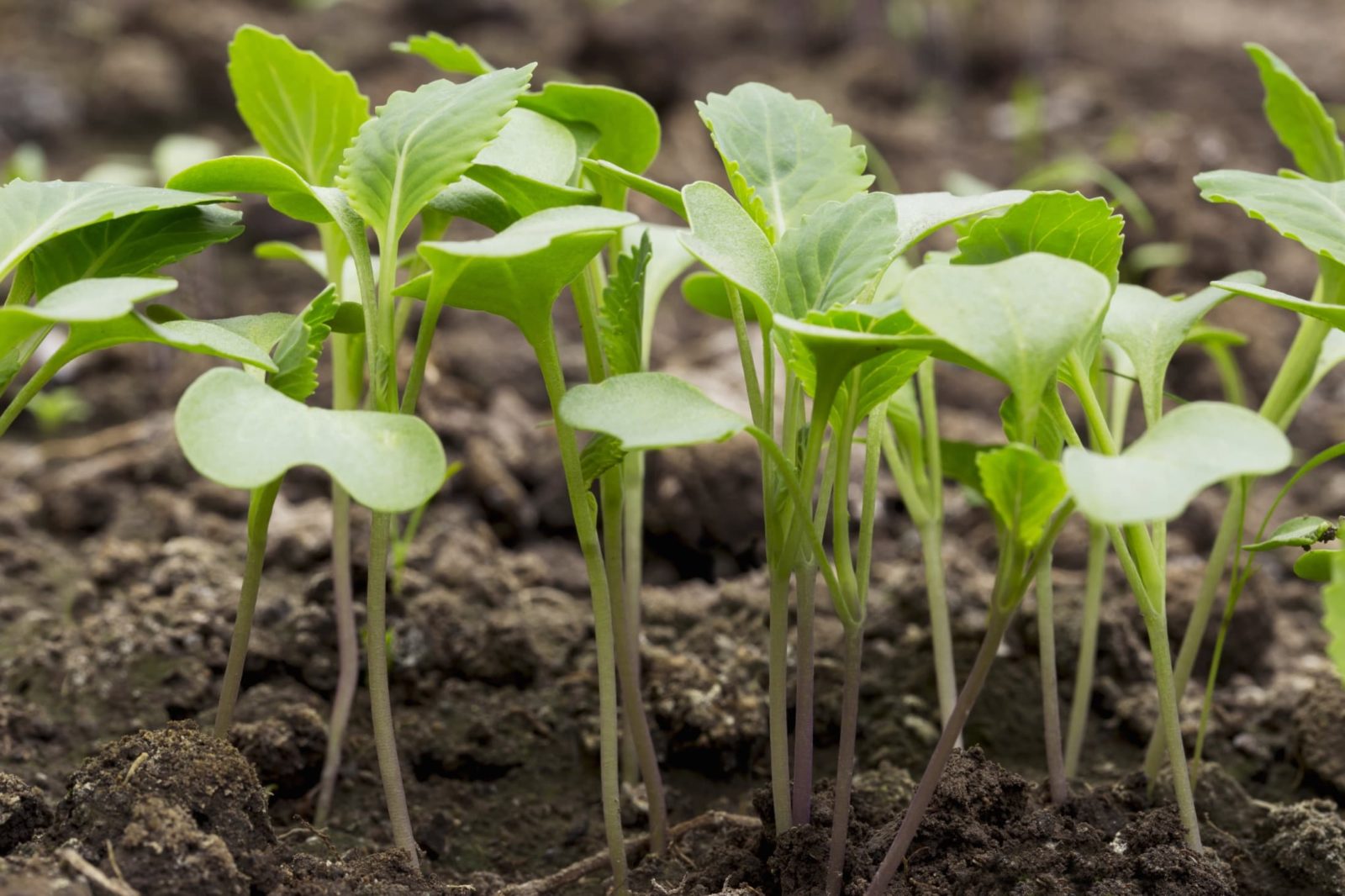

Ornamental Gardening
How Deep To Plant Cabbage Seedlings
Published: January 4, 2024
Learn the optimal depth for planting cabbage seedlings in your ornamental garden. Discover expert tips for successful cabbage cultivation.
(Many of the links in this article redirect to a specific reviewed product. Your purchase of these products through affiliate links helps to generate commission for Chicagolandgardening.com, at no extra cost. Learn more)
Table of Contents
**
Introduction
**
When it comes to cultivating a thriving vegetable garden, planting cabbage seedlings at the appropriate depth is crucial for their successful growth and development. The depth at which cabbage seedlings are planted directly impacts their ability to establish strong root systems and access essential nutrients in the soil. As an ornamental gardening enthusiast, understanding the optimal planting depth for cabbage seedlings is a fundamental aspect of nurturing a bountiful and healthy crop.
Planting cabbage seedlings at the right depth is a critical step in ensuring their resilience against environmental stressors and promoting vigorous growth throughout their lifecycle. By delving into the nuances of planting depth, gardeners can equip themselves with the knowledge necessary to foster robust cabbage plants that yield an abundant harvest.
In this comprehensive guide, we will explore the factors that should be considered before planting cabbage seedlings, delve into the optimal planting depth for these seedlings, outline the essential steps for achieving the right depth during planting, and discuss the subsequent care required to support the seedlings' development. By the end of this article, you will be well-versed in the art of planting cabbage seedlings at the perfect depth, empowering you to cultivate a flourishing cabbage patch in your ornamental garden.
**
Factors to Consider Before Planting Cabbage Seedlings
**
Before delving into the process of planting cabbage seedlings at the appropriate depth, it is imperative to consider several crucial factors that can significantly influence the success of the endeavor. By taking these factors into account, ornamental gardeners can lay a solid foundation for the healthy growth and development of their cabbage plants.
- Soil Quality: The quality of the soil is paramount when preparing to plant cabbage seedlings. Cabbage thrives in well-draining, nutrient-rich soil with a slightly acidic pH level. Conducting a soil test to assess its composition and pH can provide valuable insights into whether any amendments, such as organic matter or lime, are necessary to create an optimal growing environment for the seedlings.
- Sunlight Exposure: Cabbage is a sun-loving plant that typically requires a minimum of 6 hours of direct sunlight daily. Before planting the seedlings, evaluate the chosen site to ensure it receives ample sunlight, as insufficient exposure can impede the growth and productivity of the cabbage plants.
- Spacing Requirements: Proper spacing is essential for allowing cabbage plants to thrive and receive adequate airflow. Considering the mature size of cabbage plants, it is vital to allocate sufficient space between seedlings to prevent overcrowding, which can lead to increased susceptibility to diseases and hinder overall plant development.
- Watering Needs: Understanding the watering requirements of cabbage seedlings is crucial for maintaining optimal soil moisture levels. While cabbage plants require consistent moisture, waterlogged soil can lead to root rot and other detrimental conditions. Evaluating the drainage capacity of the planting area and establishing a suitable watering regimen are essential considerations before planting the seedlings.
- Companion Planting: Exploring compatible companion plants for cabbage can contribute to a more resilient and balanced garden ecosystem. Certain companion plants can help deter pests, attract beneficial insects, or enhance soil fertility, ultimately benefiting the growth of cabbage seedlings. Conversely, being mindful of plants that may exhibit antagonistic interactions with cabbage is equally important.
By carefully evaluating these factors and making informed decisions based on the specific conditions of your ornamental garden, you can set the stage for a successful cabbage cultivation journey.
**
Optimal Planting Depth for Cabbage Seedlings
**
Understanding the optimal planting depth for cabbage seedlings is pivotal in facilitating their establishment and subsequent growth. When determining the appropriate depth for planting cabbage seedlings, it is essential to consider the unique characteristics of these plants and their root development requirements.
The general guideline for planting cabbage seedlings is to ensure that they are set at a depth that allows for the lower set of leaves to rest at ground level. This practice provides stability to the seedlings while promoting the development of a robust root system. Planting the seedlings too shallowly can render them vulnerable to being dislodged by environmental factors, while planting them too deeply may hinder their ability to access oxygen and impede their growth.
As a rule of thumb, the optimal planting depth for cabbage seedlings typically ranges from 1/2 inch to 3/4 inch. This depth allows the seedlings to establish a secure foundation in the soil while facilitating efficient nutrient uptake and moisture absorption. Ensuring that the soil is gently packed around the base of the seedlings after planting can further enhance their stability and contact with the soil, fostering a conducive environment for root development.
It is important to note that the optimal planting depth may vary slightly based on the specific variety of cabbage being cultivated. Some varieties may exhibit variations in their growth habits and root development, necessitating slight adjustments in planting depth to accommodate these differences.
By adhering to the recommended planting depth and considering the unique attributes of the chosen cabbage variety, ornamental gardeners can provide their seedlings with an advantageous start, setting the stage for robust growth and the eventual formation of healthy, harvest-worthy cabbage heads.
**
Steps for Planting Cabbage Seedlings at the Right Depth
**
Planting cabbage seedlings at the optimal depth involves a series of deliberate steps aimed at ensuring the seedlings’ successful establishment and subsequent growth. By following these essential guidelines, ornamental gardeners can effectively plant cabbage seedlings at the right depth, setting the stage for a thriving cabbage patch.
- Prepare the Planting Area: Begin by preparing the designated planting area, ensuring that the soil is well-draining and enriched with organic matter. Clear any debris and weeds from the site to create a clean and hospitable environment for the cabbage seedlings.
- Create Planting Holes: Using a hand trowel or gardening tool, create planting holes in the soil at the appropriate spacing for the selected cabbage variety. The holes should be deep enough to accommodate the seedlings while allowing the lower set of leaves to rest at ground level.
- Gently Remove Seedlings: Carefully remove the cabbage seedlings from their containers, taking care not to disturb their delicate roots. If the seedlings are root-bound, gently tease the roots apart to encourage outward growth and facilitate nutrient absorption.
- Plant at the Right Depth: Place the seedlings into the prepared planting holes, ensuring that the lower set of leaves is positioned at ground level. Adjust the depth of the holes as needed to achieve the recommended planting depth of 1/2 inch to 3/4 inch, allowing for optimal root development and stability.
- Backfill and Firm the Soil: Once the seedlings are positioned at the appropriate depth, gently backfill the holes with soil, ensuring that the seedlings are securely anchored. Lightly firm the soil around the base of the seedlings to promote good soil-to-root contact while providing essential support.
- Water Thoroughly: After planting, thoroughly water the cabbage seedlings to settle the soil around the roots and provide essential hydration. Maintaining consistent soil moisture in the initial stages after planting is crucial for supporting the seedlings’ transition and encouraging root establishment.
- Apply Mulch: Consider applying a layer of organic mulch around the base of the seedlings to conserve soil moisture, suppress weed growth, and provide insulation. Mulch can contribute to a stable soil temperature and create a conducive microclimate for the seedlings.
By diligently following these steps, ornamental gardeners can ensure that their cabbage seedlings are planted at the right depth, fostering an environment that promotes strong root development, stability, and overall plant vigor.
**
Caring for Cabbage Seedlings After Planting
**
After successfully planting cabbage seedlings at the optimal depth, providing attentive care is essential to support their continued growth and development. By implementing proper maintenance practices, ornamental gardeners can nurture their cabbage seedlings and pave the way for robust, productive plants in the ornamental garden.
Maintain Adequate Moisture: Consistent and adequate moisture is crucial for the well-being of cabbage seedlings. Monitor soil moisture levels regularly and ensure that the seedlings receive sufficient water, particularly during dry spells or periods of intense heat. However, it is important to avoid overwatering, as excessively wet soil can lead to root rot and other detrimental conditions.
Fertilize Appropriately: To promote healthy growth, consider incorporating a balanced, slow-release fertilizer into the soil around the cabbage seedlings. Select a fertilizer specifically formulated for vegetables or brassicas, and apply it according to the manufacturer’s recommendations. This supplemental nourishment can bolster the seedlings’ nutrient intake and contribute to vigorous growth.
Monitor for Pests and Diseases: Vigilant pest and disease monitoring is essential for safeguarding cabbage seedlings against potential threats. Keep a watchful eye for common pests such as aphids, cabbage loopers, and flea beetles, and promptly address any signs of infestation. Additionally, familiarize yourself with common cabbage diseases and take proactive measures to mitigate their impact, such as practicing crop rotation and maintaining good garden hygiene.
Provide Wind Protection: Cabbage seedlings can be vulnerable to damage from strong winds, which may cause them to become dislodged or stressed. Consider implementing windbreaks or utilizing garden fabric to shield the seedlings from excessive wind exposure, particularly during their early stages of growth.
Thin Seedlings if Necessary: If the cabbage seedlings were initially planted in clusters or if overcrowding becomes apparent, thinning the seedlings to the recommended spacing can promote better air circulation and allow the remaining plants to thrive without competition for resources.
Weed Management: Regularly remove weeds from the vicinity of the cabbage seedlings to prevent competition for nutrients and minimize the risk of harboring pests. Mulching can aid in weed suppression while also conserving soil moisture, contributing to a healthier growing environment for the seedlings.
By attentively tending to the needs of the cabbage seedlings and addressing potential challenges proactively, ornamental gardeners can foster an environment that nurtures the seedlings’ growth and resilience, ultimately leading to the cultivation of robust and productive cabbage plants.
**
Conclusion
**
Cultivating a thriving ornamental garden enriched with vibrant cabbage plants is an endeavor that begins with the foundational step of planting cabbage seedlings at the optimal depth. By considering essential factors such as soil quality, sunlight exposure, spacing requirements, watering needs, and companion planting, ornamental gardeners can lay the groundwork for successful cabbage cultivation.
Understanding the optimal planting depth for cabbage seedlings and following the prescribed steps for achieving this depth are pivotal in providing the seedlings with a favorable start. By ensuring that the seedlings are planted at the recommended depth of 1/2 inch to 3/4 inch and implementing attentive care practices post-planting, gardeners can nurture the seedlings and set the stage for their robust growth and eventual harvest.
As the cabbage seedlings take root and flourish, maintaining consistent moisture, providing appropriate fertilization, monitoring for pests and diseases, and addressing potential challenges are integral components of ongoing care. By tending to the needs of the seedlings and creating a supportive environment, ornamental gardeners can foster the development of resilient and productive cabbage plants within their ornamental garden.
Armed with a comprehensive understanding of the factors influencing cabbage cultivation and the nuanced aspects of planting depth, ornamental gardeners are poised to embark on a rewarding journey of nurturing vibrant cabbage plants. By integrating the insights and guidelines presented in this guide, gardeners can cultivate a flourishing cabbage patch, replete with healthy, harvest-worthy cabbage heads that serve as a testament to their horticultural prowess and dedication.
